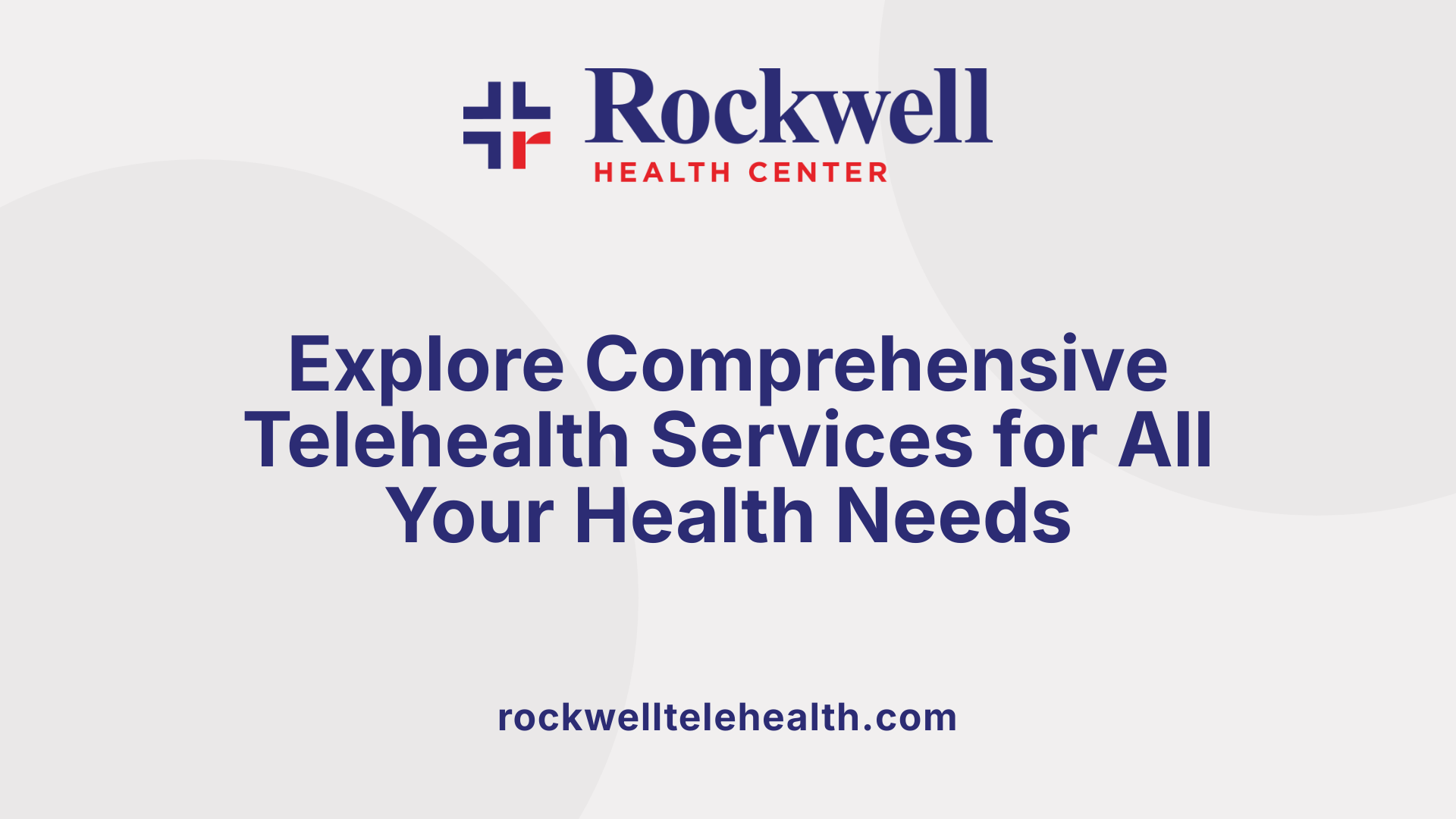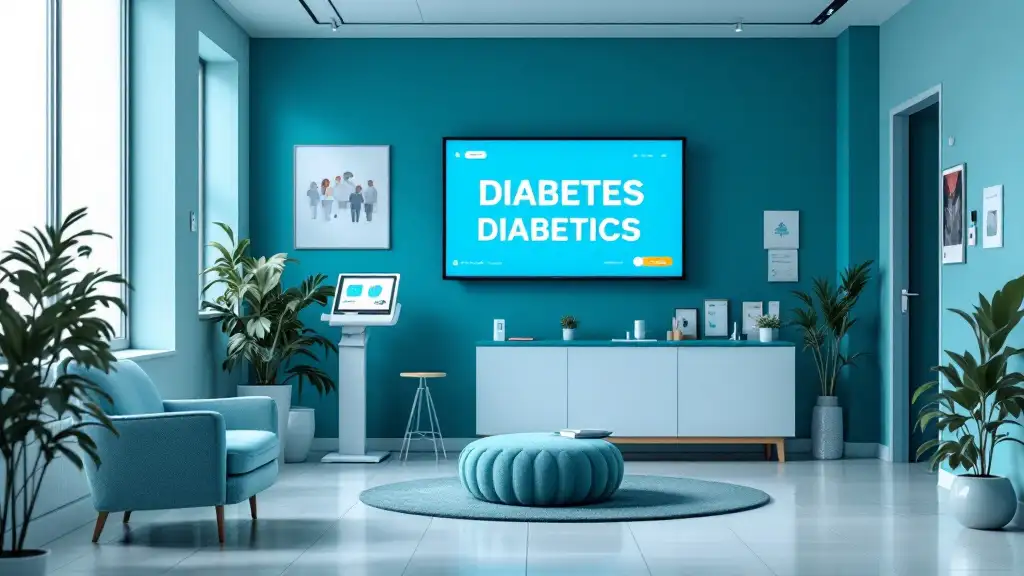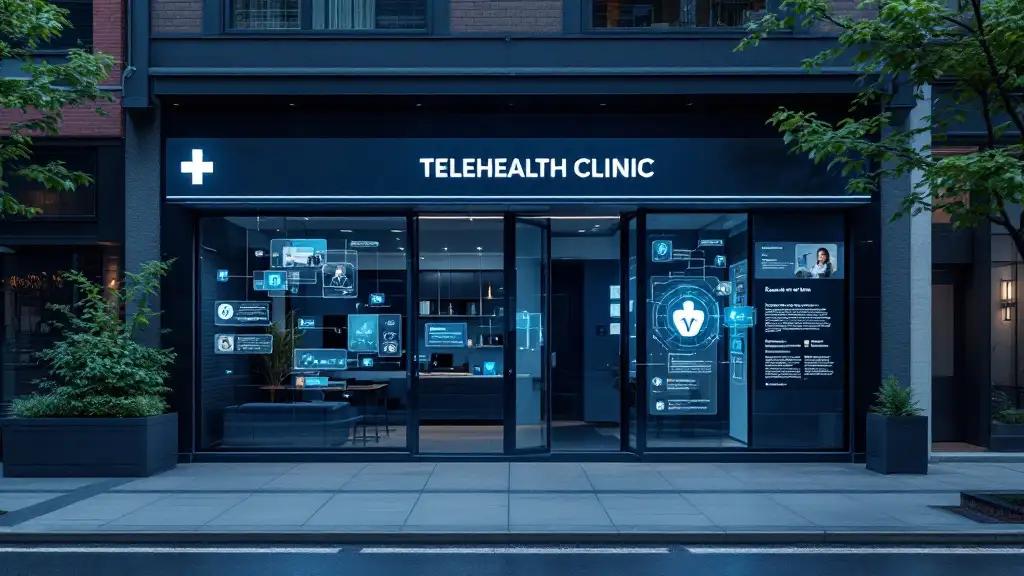The Future of Personalized Wellness Through Virtual Care
Telehealth appointments are revolutionizing healthcare by providing personalized wellness plans tailored to individual needs. With the convenience of virtual interactions, patients gain access to comprehensive health management, from primary care to mental health, all tailored to their unique circumstances. This article explores how telehealth platforms operate, their capabilities, and the extensive benefits they bring to personalized health and wellness.
How Telehealth Appointments Function and What Patients Can Expect

How do virtual care visits work, and what should patients expect from telehealth platforms?
Virtual care visits, also called telehealth, allow patients to consult with healthcare providers using their phone, computer, or tablet through video, phone calls, or app-based platforms. This process offers a simple, accessible way to receive medical care without visiting a clinic.
Before your appointment, it's helpful to review the costs involved—many virtual visits cost less than traditional office visits—and prepare your technology. Testing your internet connection, microphone, and camera ensures smooth communication. Find a quiet, well-lit space free from interruptions to make your consultation comfortable.
During the virtual visit, remain engaged by keeping eye contact with the screen, checking audio and video quality, and having your medical information ready. It’s a good idea to prepare a list of symptoms, questions, or concerns you wish to discuss with your provider.
Telehealth is suitable for treating many common, non-emergency conditions like colds, flu, skin rashes, allergies, migraine headaches, and ongoing chronic conditions such as diabetes or asthma. However, it’s not appropriate for emergencies like chest pain, severe injuries, or situations needing physical exams or immediate procedures.
These platforms prioritize patient privacy and security, complying with regulations such as HIPAA. They also provide clear instructions on how to connect and what to expect from the consultation. Overall, telehealth offers a convenient, flexible, and often cost-effective way to access healthcare, making it easier to handle minor health issues and maintain ongoing treatment.
Accessing and Utilizing Telehealth to Support Wellness Goals

How can individuals access and utilize telehealth services to support their personal wellness goals?
Individuals can easily access telehealth services through various digital platforms and apps designed to connect patients with healthcare professionals remotely. Many platforms, such as Doctor On Demand, MD Live, and Amazon One Medical, offer user-friendly patient portals and mobile apps that allow scheduling virtual visits, messaging providers, and viewing medical records.
These services enable personalized care tailored to individual wellness objectives. Patients can participate in behavioral health coaching, receive chronic disease management, and get nutritional guidance via video calls, phone consultations, or secure messaging systems. For mental health support, licensed therapists and psychiatrists are available for scheduled appointments, helping manage conditions like anxiety, depression, and stress.
Remote monitoring tools and health apps enhance self-management by tracking vital signs, medication adherence, sleep patterns, and physical activity. Data from wearable devices and app integrations can be shared with healthcare providers to refine treatment plans and monitor progress.
Accessibility is a significant advantage of telehealth, extending services to all age groups, including children, seniors, and underserved populations in remote areas. Ensuring a stable internet connection, choosing trusted secure platforms, and aligning the services with personal wellness goals are crucial steps. By leveraging these digital tools, individuals can proactively manage their health, improve lifestyle habits, and receive timely support—all from the comfort and safety of their homes.
Range of Telehealth Services: From Primary Care to Specialty Support
 Telehealth offers a comprehensive array of healthcare services that cater to various health needs, including primary care, mental health, chronic disease management, and urgent or preventive care.
Telehealth offers a comprehensive array of healthcare services that cater to various health needs, including primary care, mental health, chronic disease management, and urgent or preventive care.
In primary care, patients can consult with board-certified providers for common illnesses such as colds, flu, and skin conditions, as well as manage ongoing health issues like diabetes and hypertension. These virtual visits often include functions like medication prescriptions, health screenings, and follow-up care. Patients can also schedule routine wellness appointments, discuss lab results, and receive health education.
Mental health services through telehealth are widely accessible, providing private sessions with licensed therapists and psychiatrists for conditions such as depression, anxiety, PTSD, and addiction. These appointments are typically available by advance scheduling and can be conducted via video or audio calls, offering a convenient alternative to in-person visits. Studies show that virtual mental health care is highly effective and reduces barriers related to stigma or transportation.
For chronic conditions like high blood pressure, diabetes, and asthma, telehealth facilitates continuous monitoring and management. Patients can discuss symptoms, adjust medications, and receive personalized treatment plans without frequent trips to the doctor’s office. Integrated care models often enhance health outcomes for such complex conditions.
Additionally, telehealth supports urgent and preventive care through 24/7 on-demand services for minor injuries and illnesses—including sore throats, urinary tract infections, and skin issues—and scheduling preventive services like immunizations or lab work.
Overall, telehealth employs live video, phone consultations, asynchronous messaging, and specialized eConsults to deliver quality care efficiently. Its ability to bridge gaps in access, especially for rural or underserved populations, underscores its vital role in modern healthcare systems.
| Service Type | Primary Focus | Delivery Method | Notable Benefits |
|---|---|---|---|
| Primary Care | Diagnosing common illnesses and managing ongoing health conditions | Video, audio, messaging | Improved access, chronic disease management |
| Mental Health | Counseling, therapy, psychiatric prescriptions | Video, phone | Convenient, reduces stigma |
| Chronic Disease Management | Monitoring and treating conditions like diabetes, hypertension | Video, remote monitoring | Better health outcomes, patient engagement |
| Urgent & Preventive Care | Minor injuries, flu, immunizations | On-demand virtual visits | 24/7 availability, timely intervention |
How Telehealth Supports Personalized Healthcare

How do telehealth appointment processes contribute to personalized healthcare?
Telehealth appointment processes significantly enhance the personalization of healthcare by allowing providers to tailor consultations directly to each patient’s unique needs. During a virtual visit, patients can describe their symptoms, discuss medical histories, and share concerns from the comfort of their own space, enabling a more relaxed and honest communication. This approach helps providers understand individual circumstances better and develop treatments suited specifically for the patient.
Furthermore, telehealth platforms often integrate with patient portals, health apps, and remote monitoring devices. These digital tools facilitate continuous collection of health data such as vital signs, glucose levels, or medication adherence. This remote data review allows healthcare professionals to examine ongoing health trends and make real-time adjustments to treatment plans.
Video conferencing, secure messaging, and data sharing technology also support ongoing dialogue between patients and providers, fostering a collaborative approach to managing health. Providers can request additional information, clarify treatment steps, or tweak therapies based on the latest data.
Care coordination is another vital aspect, where telehealth enables easy communication with specialists or primary care doctors. Follow-up appointments can be scheduled promptly, ensuring that care remains dynamic and responsive.
Overall, telehealth makes healthcare more accessible, continuous, and tailored by integrating digital tools, enabling better management of individual health conditions and improving overall patient outcomes.
Benefits of Telehealth for Personalized Wellness Management
How does telehealth improve access to healthcare services?
Telehealth significantly enhances access to healthcare by allowing patients to connect with board-certified providers from any device with a camera. This is especially valuable for those in remote or underserved areas where traditional healthcare facilities may be limited. Patients can schedule virtual primary care, urgent care, mental health services, and specialist consultations without the need to travel.
How does telehealth support the ongoing management of health conditions?
Ongoing health management is a major advantage of telehealth. Patients with chronic conditions like diabetes, high blood pressure, or asthma can have regular virtual check-ins, monitor their vitals with digital tools, and receive personalized care plans. This continuous engagement helps in early detection of issues, promotes better adherence to treatment, and ultimately leads to improved clinical outcomes.
How does telehealth boost patient involvement in health management?
Telehealth encourages active patient participation by providing convenient access to healthcare advice, prescriptions, and health education. Patients can communicate more frequently with their healthcare providers, set and review health goals, and receive tailored interventions. The availability of virtual care options makes it easier to discuss symptoms, ask questions, and stay committed to treatment plans.
What impact does telehealth have on clinical results?
Enhanced access and ongoing management foster better health outcomes. Regular virtual visits lead to timely adjustments in treatment, prevent complications, and support preventive care activities like immunizations and screenings. For example, managing conditions like hypertension or diabetes more effectively through telehealth results in fewer emergencies and hospitalizations.
| Benefits | Description | Additional Details |
|---|---|---|
| Improved Access | Connects patients with healthcare providers remotely, overcoming geographical barriers. | Available across all 50 states, various specialties. |
| Ongoing Management | Supports continuous care through regular check-ins, monitoring tools, and digital health apps. | Helps manage chronic diseases effectively. |
| Patient Engagement | Empowers patients to be active in their healthcare through accessible communication and education. | Includes scheduling, prescriptions, and health coaching. |
| Better Outcomes | Facilitates early intervention, preventing health deterioration and hospital visits. | Contributes to higher satisfaction and better health stats. |
Telehealth is transforming personalized wellness by making healthcare more accessible, engaging, and effective. As technology advances, its role in proactive health management and improving clinical results will only grow, ensuring better quality of life for diverse patient populations.
Types of Personalized Wellness Plans via Telehealth and Their Structures
Telehealth has opened up a wide array of personalized wellness plans that focus on different aspects of health and wellbeing. These plans often cover areas like lifestyle choices, behavioral health, and medical conditions.
A typical wellness plan begins with a thorough assessment of the individual’s current health status, medical history, and lifestyle habits. This evaluation helps identify areas that need improvement and sets the foundation for goal setting.
Goals are usually defined using the SMART criteria—Specific, Measurable, Achievable, Relevant, and Time-bound. This approach ensures that the patient and provider agree on clear targets, whether it's managing blood sugar levels, losing weight, reducing stress, or improving sleep quality.
The structure of these plans involves tailored strategies including dietary guidance, exercise routines, mental health support, and medication management if required. Behavioral interventions may include counseling, stress reduction techniques, and habit formation strategies.
To deliver these plans efficiently, telehealth platforms utilize various modalities such as live video consultations, secure messaging, and remote monitoring devices like wearables. Mobile health apps also enable continuous tracking of vital signs, activity levels, and other relevant data.
Regular assessments and data reviews are integral to these programs. They allow healthcare providers to monitor progress, make adjustments, and reinforce behavioral changes. This ongoing process ensures that the wellness plan adapts dynamically to the patient’s evolving needs.
Designing effective personalized wellness plans involves creating streamlined workflows that facilitate patient engagement and ensure compliance. Additionally, providers must address legal considerations, data security, and operational workflows to maintain privacy and meet healthcare regulations.
In summary, personalized wellness plans via telehealth are multi-faceted, involving initial assessments, goal setting, continuous monitoring, and adaptive strategies to promote sustainable health improvements. They leverage technology to deliver tailored, accessible, and scalable care.
Customizing Wellness Programs for Individual Needs
How can telehealth services be tailored to individual health needs through personalized wellness programs?
Telehealth platforms like Doctor On Demand, MD Live, and Amazon One Medical facilitate the development of customized wellness strategies. These programs leverage detailed health data, patient goals, and personal preferences to craft targeted care plans.
A crucial aspect of personalization involves integrating electronic health records (EHR), which securely compile medical histories, ongoing treatments, and specific health metrics. This centralized, HIPAA-compliant system allows providers to monitor patient progress continuously and make informed adjustments to the wellness plan.
Digital tools play a vital role in engaging patients. Secure messaging enables ongoing communication, while video consultations facilitate real-time discussions and assessments. Automated reminders for medication, screenings, or lifestyle changes help maintain consistency and adherence.
Interactive modules, such as health tracking apps and educational resources, encourage active participation. For example, patients can log symptoms, track vital signs, or access tailored health tips, which empower them to take charge of their health.
Remote observations during virtual visits, including in-home assessments and involving family members, enrich the clinician’s understanding of the patient's environment and daily routines. This comprehensive view supports more effective, personalized recommendations.
Billing integration and flexible scheduling options improve accessibility, removing barriers for patients with busy schedules or limited mobility. These features foster a seamless, patient-centered approach to ongoing health management.
Overall, personalized wellness programs via telehealth adapt over time, responding to changing health status or lifestyle. This dynamic, tailored approach enhances patient satisfaction and health outcomes, creating a sustainable model for individual healthcare.
Capabilities of Telehealth Platforms for Personalized Wellness Solutions
Many telehealth platforms are equipped with features that enable the delivery of highly personalized wellness services. Their capabilities include flexible customization options, seamless integrations, and specialized solutions tailored to specific healthcare needs.
Features and integrations are central to creating tailored programs. Platforms like Doxy.me and VSee allow providers to customize their interfaces by adding branding elements, adjusting workflows, and integrating with electronic health records (EHRs) and billing systems. Such integrations streamline appointments, documentation, and billing, making the virtual care experience more efficient and cohesive.
Customization options also extend to treatment plans and health monitoring. For example, Thera-LINK focuses on mental health, offering secure messaging, real-time document sharing, and tailored therapy modules. Providers can assign personalized exercises, track patient progress, and adjust plans based on ongoing feedback.
Specialized solutions further enhance personalization. HRS uses remote monitoring devices, symptom surveys, and educational modules that are suited for research or specific populations like chronic disease patients. These tools enable healthcare providers to design interventions that are uniquely suited to individual needs.
Large-scale platforms like Zoom Healthcare support organization-wide implementations with features such as webinars, recording options, and group sessions. These capabilities facilitate tailored engagement strategies for diverse populations.
| Platform | Customization Features | Integrations | Special Solutions |
|---|---|---|---|
| Doxy.me | Branding, workflow setup | EHR, billing | General telehealth |
| VSee | Workflow adjustments | EHR, billing | Multi-party calls |
| Thera-LINK | Therapy modules, progress tracking | None specified | Mental health focus |
| HRS | Remote monitoring, educational tools | Data sharing | Chronic disease support |
| Zoom Healthcare | Large groups, webinars | Calendar, email systems | Organization-wide training |
Overall, these capabilities allow providers to craft personalized treatment plans, enhance patient engagement, and optimize health outcomes, making telehealth a versatile and effective tool for tailored wellness solutions.
Supporting Inclusive and Equitable Telehealth Care
How does telehealth improve access for underserved populations?
Telehealth broadens healthcare access for communities that might face barriers to traditional in-person visits. It offers services across all 50 states and is especially beneficial for rural areas, low-income groups, and individuals with mobility challenges. Through virtual primary care, urgent care, and mental health services available 24/7 or by appointment, patients can receive timely support without needing to travel long distances.
Many insurance plans, including UnitedHealthcare, Medicaid, and Medicare, cover telehealth visits, making healthcare more affordable and accessible. Patients can schedule virtual consultations easily via apps or member portals, reducing the need for emergency room visits and costly in-person appointments.
Furthermore, virtual care providers often send prescriptions directly to pharmacies and coordinate specialist referrals, streamlining the treatment process—especially vital for underserved patients who may have limited options nearby.
Transforming Healthcare with Personalized Digital Care
Telehealth appointments that offer personalized wellness plans exemplify the future of healthcare—where technology bridges gaps, and care is tailored to individual needs. With a broad spectrum of services, from primary care to mental health, and the ability to develop dynamic, adaptable wellness plans, virtual care platforms are transforming health management. As technology advances and access expands, telehealth will continue to empower patients, promote health equity, and support sustained well-being in innovative, accessible ways.
























































































.png)